#Agroecological production
Explore tagged Tumblr posts
Link
1 note
·
View note
Text
The Future of Sustainable Agriculture: Innovations and Best Practices
Agriculture is one of the largest industries in the world, providing food for billions of people. However, the current state of agriculture has a significant impact on the environment, from soil degradation to water pollution and loss of biodiversity. It is crucial for the future of our planet that we transition towards sustainable agriculture practices. we will explore the latest innovations…
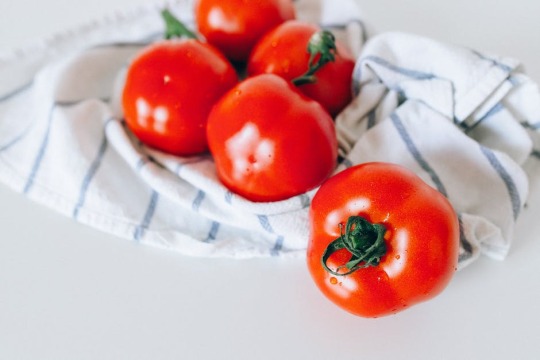
View On WordPress
#agroecology#agroforestry#best practices#biodiversity#biological control#climate change#conservation agriculture#crop rotation#ecosystem services#food production#government policies#habitat manipulation#individual action#integrated pest management#intercropping#land use#natural methods#organic agriculture#precision agriculture#regenerative agriculture#resistant crops#soil health#sustainable agriculture#sustainable future.#technology#vertical farming
2 notes
·
View notes
Text
How Farmers in Kenya Are Boosting Yields with Rabbit Urine
Farmers in Kenya are increasingly turning to rabbit urine as a natural alternative to synthetic fertilisers. They are finding it to be a healthier and more sustainable way to improve soil fertility and boost crop yields. Benedicta Nkirote, a farmer from Marurui in Meru county, swears by rabbit urine as an effective foliar fertiliser. Unlike conventional chemical fertilisers, rabbit urine…
#affordable fertiliser#Agricultural Innovation#Agroecology#chemical-free farming#Climate-Smart Agriculture#crop yield improvement#eco-friendly fertiliser#farm productivity#foliar fertiliser#insecticide alternative#kenyan farmers#macronutrients for plants#natural fertiliser#natural soil conditioner#organic farming kenya#organic manure#organic vegetable farming#permaculture Kenya#pest control#rabbit farming#rabbit urine benefits#rabbit urine fertiliser#SOIL FERTILITY#sustainable agriculture#sustainable pest management#synthetic fertiliser alternative
0 notes
Text
Quit your Job and Farm Full Time: Joel Salatin's Recipe for Success
So, you’ve been homesteading and you’re ready to go all in. What are the next steps for quitting your job and farming full time? Joel Salatin provides his recommendations for a successful transition to becoming a full-time farmer. A lot of homesteaders ask me, “Okay, I’ve got the homestead thing down. I’ve checked that box. I’m ready to take it to another level. I’m ready to actually farm…
#achieving goals#AchievingGoals#aesthetic organization#agricultural entrepreneurship#agricultural innovation#agroecology#apple#arthritis#artisan food production#artisanal farming#audience engagement#audience growth#backyard farming#beauty hacks#body positivity#bodyweight exercises#breakup recovery#budgeting tips#BudgetingTips#building a brand#building trust#business growth#cardio workouts#cleaning hacks#cleaning tips#clutter management#clutter-free living#coaching business FinancialFreedom#CoachingBusiness organization hacks#color theory in fashion
0 notes
Text
Mukiibi farmed in Uganda but is now the president of Slow Food International, promoting more sustainable production and consumption globally. There have been challenges, he says, with agriculture giants claiming agroecology cannot deliver at scale. He believes this message is undermining and unwelcome, and that the agroecology movement is having success across Africa. “I’ve travelled to more than 30 African countries, meeting farmers in the communities, and many express the fear and worry that they cannot catch up with the seed system controlled by big business,” says Mukiibi. “It is so important not to lose the argument because then we hand our future to the corporations and their intention is not to feed anyone. “It is to feed their revenue streams, to stamp their control over food and to dictate who should produce what and when.”
606 notes
·
View notes
Text
Agroecology—a science, practice, and movement that seeks social, political, economic, and environmental sustainability in the global food system—is gaining momentum in the U.S., according to a new Dartmouth-led commentary in Nature Food. As the co-authors report, the approach requires coordination among scientists, farmers, and activists.
"Agroecology is different, as it strives to achieve both ecological and social sustainability of food systems without sacrificing one for the other. We cannot save biodiversity and ecosystem integrity without also preserving farmer livelihoods and ensuring that the food systems we create provide food that is culturally relevant to local communities, and not simply meeting a calorie quota," says Ong.
Supporters of agroecology say the U.S. food system is dominated by industrial agriculture, which is characterized by monoculture production, reliance on agrochemicals like pesticides and fertilizers, and advanced technology and machinery that depend heavily on fossil fuels.
Prior research has found that challenges facing global food systems—which include food insecurity, public health crises, biodiversity loss, and climate change—are perpetuated in part by the U.S. food system and the political influence of its big players.
//Granny's comment: Agroecology is solarpunk AF
522 notes
·
View notes
Text
"The transformation of ancestral lands into intensive monoculture plantations has led to the destruction of Guatemala’s native forests and traditional practices, as well as loss of livelihoods and damage to local health and the environment.
A network of more than 40 Indigenous and local communities and farmer associations are developing agroecology schools across the country to promote the recovery of ancestral practices, educate communities on agroecology and teach them how to build their own local economies.
Based on the traditional ���campesino a campesino” (from farmer to farmer) method, the organization says it has improved the livelihoods of 33,000 families who use only organic farming techniques and collectively protect 74,000 hectares (182,858 acres) of forest across Guatemala.
Every Friday at 7:30 a.m., María Isabel Aguilar sells her organic produce in an artisanal market in Totonicapán, a city located in the western highlands of Guatemala. Presented on a handwoven multicolor blanket, her broccoli, cabbage, potatoes and fruits are neatly organized into handmade baskets.
Aguilar is in a cohort of campesinos, or small-scale farmers, who took part in farmer-led agroecology schools in her community. As a way out of the cycle of hunger and poverty, she learned ecological principles of sowing, soil conservation, seed storage, propagation and other agroecological practices that have provided her with greater autonomy, self-sufficiency and improved health.
“We learned how to develop insecticides to fend off pests,” she said. The process, she explained, involves a purely organic cocktail of garlic, chile, horsetail and other weeds and leaves, depending on what type of insecticide is needed. “You want to put this all together and let it settle for several days before applying it, and then the pests won’t come.”
“We also learned how to prepare fertilizer that helps improve the health of our plants,” she added. “Using leaves from trees or medicinal plants we have in our gardens, we apply this to our crops and trees so they give us good fruit.”
The expansion of large-scale agriculture has transformed Guatemala’s ancestral lands into intensive monoculture plantations, leading to the destruction of forests and traditional practices. The use of harmful chemical fertilizers, including glyphosate, which is prohibited in many countries, has destroyed some livelihoods and resulted in serious health and environmental damage.
To combat these trends, organizations across the country have been building a practice called campesino a campesino (from farmer to farmer) to revive the ancient traditions of peasant families in Guatemala. Through the implementation of agroecology schools in communities, they have helped Indigenous and local communities tackle modern-day rural development issues by exchanging wisdom, experiences and resources with other farmers participating in the program.
Keeping ancestral traditions alive
The agroecology schools are organized by a network of more than 40 Indigenous and local communities and farmer associations operating under the Utz Che’ Community Forestry Association. Since 2006, they have spread across several departments, including Totonicapán, Quiché, Quetzaltenango, Sololá and Huehuetenango, representing about 200,000 people — 90% of them Indigenous.
“An important part of this process is the economic autonomy and productive capacity installed in the communities,” said Ilse De León Gramajo, project coordinator at Utz Che’. “How we generate this capacity and knowledge is through the schools and the exchange of experiences that are facilitated by the network.”
Utz Che’, which means “good tree” in the K’iche’ Mayan language, identifies communities in need of support and sends a representative to set up the schools. Around 30-35 people participate in each school, including women and men of all ages. The aim is to facilitate co-learning rather than invite an “expert” to lead the classes.
The purpose of these schools is to help farmers identify problems and opportunities, propose possible solutions and receive technical support that can later be shared with other farmers.
The participants decide what they want to learn. Together, they exchange knowledge and experiment with different solutions to thorny problems. If no one in the class knows how to deal with a certain issue, Utz Che’ will invite someone from another community to come in and teach...
Part of what Utz Che’ does is document ancestral practices to disseminate among schools. Over time, the group has compiled a list of basics that it considers to be fundamental to all the farming communities, most of which respond to the needs and requests that have surfaced in the schools.
Agroecology schools transform lives
Claudia Irene Calderón, based at the University of Wisconsin-Madison, is an expert in agroecology and sustainable food systems in Guatemala. She said she believes the co-creation of knowledge is “key to balance the decision-making power that corporations have, which focus on profit maximization and not on climate change mitigation and adaptation.”
“The recovery and, I would add, revalorization of ancestral practices is essential to diversify fields and diets and to enhance planetary health,” she said. “Recognizing the value of ancestral practices that are rooted in communality and that foster solidarity and mutual aid is instrumental to strengthen the social fabric of Indigenous and small-scale farmers in Guatemala.”
Through the implementation of agroecology schools across the country, Utz Che’ says it has improved the livelihoods of 33,000 families. In total, these farmers also report that they collectively protect 74,000 hectares (182,858 acres) of forest across Guatemala by fighting fires, monitoring illegal logging and practicing reforestation.
In 2022, Utz Che’ surveyed 32 women who had taken part in the agroecology school. All the women had become fully responsible for the production, distribution and commercialization of their products, which was taught to them in agroecology schools. Today, they sell their produce at the artisanal market in Totonicapán.
The findings, which highlight the many ways the schools helped them improve their knowledge, also demonstrate the power and potential of these schools to increase opportunities and strengthen the independence of women producers across the country...
The schools are centered around the idea that people are responsible for protecting their natural resources and, through the revitalization of ancestral practices, can help safeguard the environment and strengthen livelihoods."
-via Mongabay News, July 7, 2023
#a little older but still very good!#indigenous#farming#agriculture#sustainable agriculture#agroecology#land back#guatemala#latin america#north america#central america#indigenous knowledge#indigenous peoples#good news#hope
317 notes
·
View notes
Text
Wealthy economies should abandon growth of gross domestic product (GDP) as a goal, scale down destructive and unnecessary forms of production to reduce energy and material use, and focus economic activity around securing human needs and well-being. This can enable rapid decarbonization and stop ecological breakdown while improving social outcomes. It frees up energy and materials for low- and middle-income countries in which growth might still be needed for development. Degrowth is a purposeful strategy to stabilize economies and achieve social and ecological goals, unlike recession, which is chaotic and socially destabilizing and occurs when growth-dependent economies fail to grow. ... Social movements and cultural change brewing below the surface often precede and catalyse political transformation. ... Researchers should study political movements that are aligned with degrowth values — from La Via Campesina, the international peasants’ movement that advocates food sovereignty and agroecological methods, to the municipalist and communalist movements and governments in progressive cities such as Barcelona or Zagreb, which promote policies favouring social justice and the commons. ... In our view, the question is no longer whether growth will run into limits, but rather how we can enable societies to prosper without growth, to ensure a just and ecological future.
165 notes
·
View notes
Text
There is a strange idea in some environmentalist circles that human population is the main cause of ecological breakdown, and that humans have an *intrinsically* negative impact on ecosystems. Both claims are incorrect. First, human ecological impact is entirely a function of the system of production and provisioning. It depends on what is being produced, under what conditions, and how the yields of production are distributed. For instance, an economy that uses mostly public transit, renewable energy, multi-unit housing and plant-based protein can meet human needs with a fraction of the impact of an economy that produces a lot of SUVs, fossil fuels, mansions and industrial beef, and which allocates a bunch of totally unnecessary production to service the fantasies of overconsuming elites. Remember, we know it is possible to provide decent living standards (DLS) for 8.5 billion people with 30% of current global energy and material use, by ensuring efficient technologies and focusing production on socially necessary goods and services. That much is fairly straightforward. But one might say that, even so, every person will always have some negative impact. This too is incorrect. Again, it depends entirely on the production system, and specifically, what people are mobilized to do. Under capitalism, labour is mobilized overwhelmingly to produce things that are profitable to capital. But labour could just as easily be mobilized instead for regeneration. Using straightforward public finance mechanisms, we can fund massive programmes to reforest barren lands, regenerate degraded ecosystems, restore biodiversity, advance agroecological methods, etc. Under these conditions, it is possible for societies to not only have minimal negative impact on ecology, but to have a net-positive impact, actively improving ecological indicators. People buy into the myth of the intrinsic destructiveness of humans because we have come to take capitalism for granted. But it is 100% possible to organize production and labour differently. Under capitalism, we are compelled to produce whatever is most profitable to capital, even if it is destructive to humans and nature. Under conditions of economic democracy, we can produce what we know is necessary for well-being and ecology.
—Dr. Jason Hickel
5 notes
·
View notes
Link
1 note
·
View note
Text
Sargassum, a type of brown macroalgae, has been inundating beaches across the Caribbean since 2011. It comes from the Sargasso Sea in the Atlantic Ocean.
The seaweed has harmed Caribbean economies and human health, making it a national emergency in some island-nations.
Over the past decade, entrepreneurs and scientists have found ways to turn sargassum into nutrient-rich biofertilizers, biostimulants and other organic products to boost agricultural yields while cutting back on chemicals.
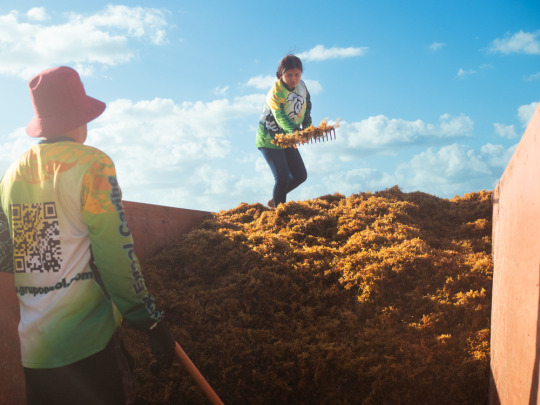
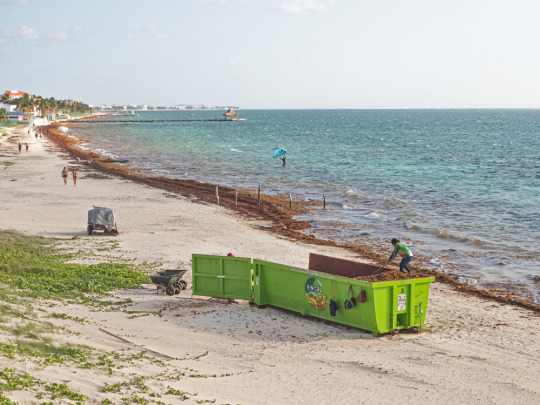
Small-scale industry or regional boon?
While the industry remains a small club, the issue isn’t going away. Mexico uses sargassum for a long list of products, such as eco-concrete and biogas. And in Miami, a recent initiative offered cash prizes for innovative uses of sargassum as a mitigation measure, including Carbonwave and a St. Lucian biofertilizer company called Algas Organics. As the industry grows, Morrison anticipated that “ownership” over sargassum, depending on its location in the water, could become a point of contention.
For now, the agroecological benefits of using sargassum to help produce more nutritious food are what keep Forte motivated at Red Diamond.
As a child, his grandmother’s garden was paradise. He climbed mango trees, plucked ripe bananas off the stems and stole the occasional “finger fruit,” a local term for carambola (star fruit, Averrhoa carambola), as an afternoon snack. Forte watched as she recycled plant matter back into the soil, allowing the crops to proliferate year-round.
Looking back, Forte realized his grandmother was practicing what is now called permaculture, a style of agroecology that prioritizes recycling nutrients in a zero-waste manner.
“Nature is something that is ever-changing,” Forte said. “We have to be as flexible and as adaptable as nature to be able to work with it effectively.”
#solarpunk#solarpunk business#solarpunk business models#solar punk#reculture#caribbean#sargassum#seaweed#blue economy#nature
17 notes
·
View notes
Text
Bioinputs Regulatory Frameworks enters into force in Brazil

The Regulatory Framework for Bioinputs ( Law No. 15.070/24, or “Bioinputs Law”) was published on December 24, 2024. It regulates the production, import, export, registration, trade, use, inspection, audit, research, testing, packaging, labeling, advertising, transport, storage, rates, service provision, waste and packaging disposal, and production incentives within the scope of bioinputs for agricultural, livestock, aquaculture, and forestry activities.
The President of Brazil did not veto any provisions of Bill No. 658/21 proposed by representative Zé Vitor (Regional Liberal Party of Minas Gerais), which originated the new law and was approved by the Brazilian House of Representatives and the Federal Senate.
Bioinputs are natural products (such as microorganisms and plant extracts) used in agriculture and livestock to replace other types of chemicals. The Bioinputs Law seeks to increase legal certainty so that farmers and companies can produce in a secure and regulated manner. It applies to all cultivation systems, including conventional, organic, and agroecological systems.
These are the highlights of the new law.
Continue reading.
6 notes
·
View notes
Text
Transforming Rocky Lands into Thriving Farms: The Success Story of Beatrice Mwangi in Gilgil
Discover how Beatrice Mwangi transformed rocky land in Langalanga, Gilgil, into a thriving organic farm, conserving indigenous seeds and promoting sustainable farming practices. Learn about Beatrice Mwangi’s journey from struggling on unproductive rocky terrain to becoming a leading advocate for indigenous seed saving and regenerative agriculture in Nakuru County. Explore the inspiring story of…
#Agroecology#Beatrice Mwangi#climate-resilient crops#community farming#eco-friendly farming#ecological farming#environmental conservation#farming in kenya#farming success stories#farming techniques#Food security#Gilgil farming#indigenous seeds#Kenyan organic farms#local seed varieties#Nakuru County#Nakuru organic farms.#natural farming methods#organic farming#organic produce#organic vegetables#Permaculture#regenerative farming#seed conservation#seed diversity#Small-Scale Farming#soil conservation#sustainable agriculture#sustainable food production.#sustainable practices
1 note
·
View note
Text
We can thank small farmers, environmentalists, academic researchers, and food and farming activists for advancing ecologically sound food production methods. Agroecology, holistic resource management, permaculture, and other methods can address many of the global food system’s worst impacts, including biodiversity loss, energy depletion, toxic pollution, food insecurity, and massive carbon emissions.
These inspiring testaments to human ingenuity and goodwill have two things in common: They involve smaller-scale farms adapted to local conditions and depend more on human attention and care than energy and technology. In other words, they are the opposite of industrial monocultures—huge farms that grow just one crop.
However, to significantly reduce the many negative impacts of the food system, these small-scale initiatives need to spread worldwide. Unfortunately, this has not happened because the transformation of farming requires shifting not just how food is produced but also how it is marketed and distributed. The food system is inextricably linked to an economic system that, for decades, has been fundamentally biased against the kinds of changes we need.
Destructive Food Policies
Put simply, economic policies almost everywhere have systematically promoted ever-larger scale and monocultural production. Those policies include:
5 notes
·
View notes
Text
There is a strange idea in some environmentalist circles that human population is the main cause of ecological breakdown, and that humans have an intrinsically negative impact on ecosystems. Both claims are incorrect. First, human ecological impact is entirely a function of the system of production and provisioning. It depends on what is being produced, under what conditions, and how the yields of production are distributed. For instance, an economy that uses mostly public transit, renewable energy, multi-unit housing and plant-based protein can meet human needs with a fraction of the impact of an economy that produces a lot of SUVs, fossil fuels, mansions and industrial beef, and which allocates a bunch of totally unnecessary production to service the fantasies of overconsuming elites. Remember, we know it is possible to provide decent living standards (DLS) for 8.5 billion people with 30% of current global energy and material use, by ensuring efficient technologies and focusing production on socially necessary goods and services. That much is fairly straightforward. But one might say that, even so, every person will always have some negative impact. This too is incorrect. Again, it depends entirely on the production system, and specifically, what people are mobilized to do. Under capitalism, labour is mobilized overwhelmingly to produce things that are profitable to capital. But labour could just as easily be mobilized instead for regeneration. Using straightforward public finance mechanisms, we can fund massive programmes to reforest barren lands, regenerate degraded ecosystems, restore biodiversity, advance agroecological methods, etc. Under these conditions, it is possible for societies to not only have minimal negative impact on ecology, but to have a net-positive impact, actively improving ecological indicators. People buy into the myth of the intrinsic destructiveness of humans because we have come to take capitalism for granted. But it is 100% possible to organize production and labour differently. Under capitalism, we are compelled to produce whatever is most profitable to capital, even if it is destructive to humans and nature. Under conditions of economic democracy, we can produce what we know is necessary for well-being and ecology.
Jason Hickel
See this paper for the "decent living standards (DLS) for 8.5 billion people with 30% of current global energy and material use" stat
234 notes
·
View notes
Text
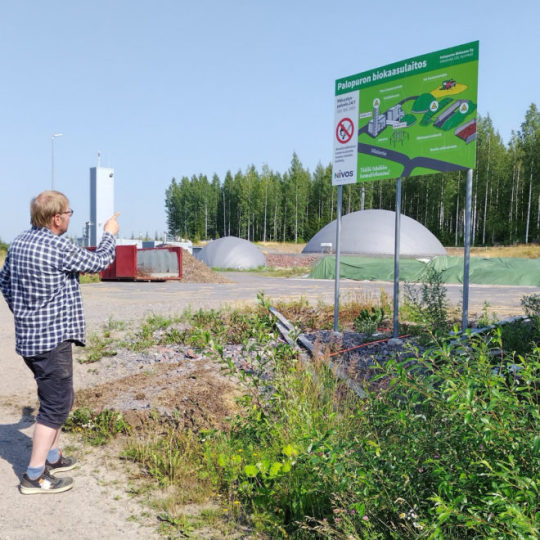
Self-sufficient organic Finnish farm grows its own fuel and a greener future
An award-winning farm has teamed up with Helsinki University to create a symbiotic food production system that is self-sufficient in energy and nutrients. It’s a trailblazer in sustainable agriculture.
Photo above: Farmer Markus Eerola shows visitors the biogas plant that helps make his farm an energy producer rather than an energy consumer.Photo: Wif Stenger
Organic Knehtilä Farm provides its own nutrients and energy, thanks to careful long-term planning and a small onsite biogas plant operated by energy utility Nivos.
The biogas powers his tractor, pickup truck and cars, and is available to others at a commercial filling station on the edge of the farm, although vehicles that can use biogas are still relatively rare. It offers a valuable alternative to meet the growing need for affordable, clean domestic energy.
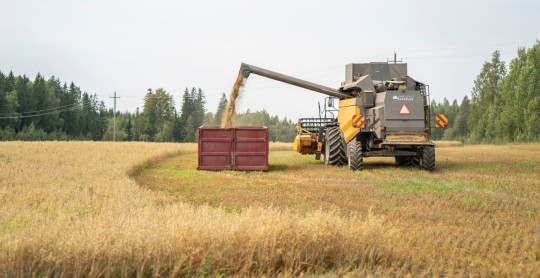
Demand for organic food continues to grow. “The price gap between organic and standard production is narrowing, partly because we don’t need fertiliser. Our farm has its own product line of oat and buckwheat products, which are produced here using a proven cultivation method known as agroecological symbiosis, where nutrients and energy are efficiently recycled.”
The sprawling 380-hectare farm’s carefully balanced circular economy has developed over a decade and a half, earning a WWF award in 2015 as a model of nature-friendly agriculture. In 2021, the Finnish Organic Association chose Knehtilä for the honour of Organic Business of the Year.
“Biogas production can convert farms from being energy consumers to energy producers, and play an important role in the transition away from fossil fuels. When it’s done in a smart way, it’s also possible to increase biodiversity in farming systems.”
Knehtilä forms part of the Global Network of Lighthouse Farms, a project led by Wageningen University in the Netherlands, involving commercially viable farms that offer “radical solutions to address sustainability challenges.” International visitors frequently come to Knehtilä to learn about unique system.
The rich, vibrant cycle of life at Knehtilä is visible in not only the lush fields, but also in the insects and frogs that frequent them, and in a few animals such as horses, sheep, goats, chickens and rabbits. The farm is also a lively event venue; a high-ceilinged, 80-year-old barn has been converted to a space for up to 100 people for weddings, theatre performances and concerts.
#solarpunk#solar punk#indigenous knowledge#reculture#self reliant farming#agroecology#biogas#finland#organic farming#design
34 notes
·
View notes